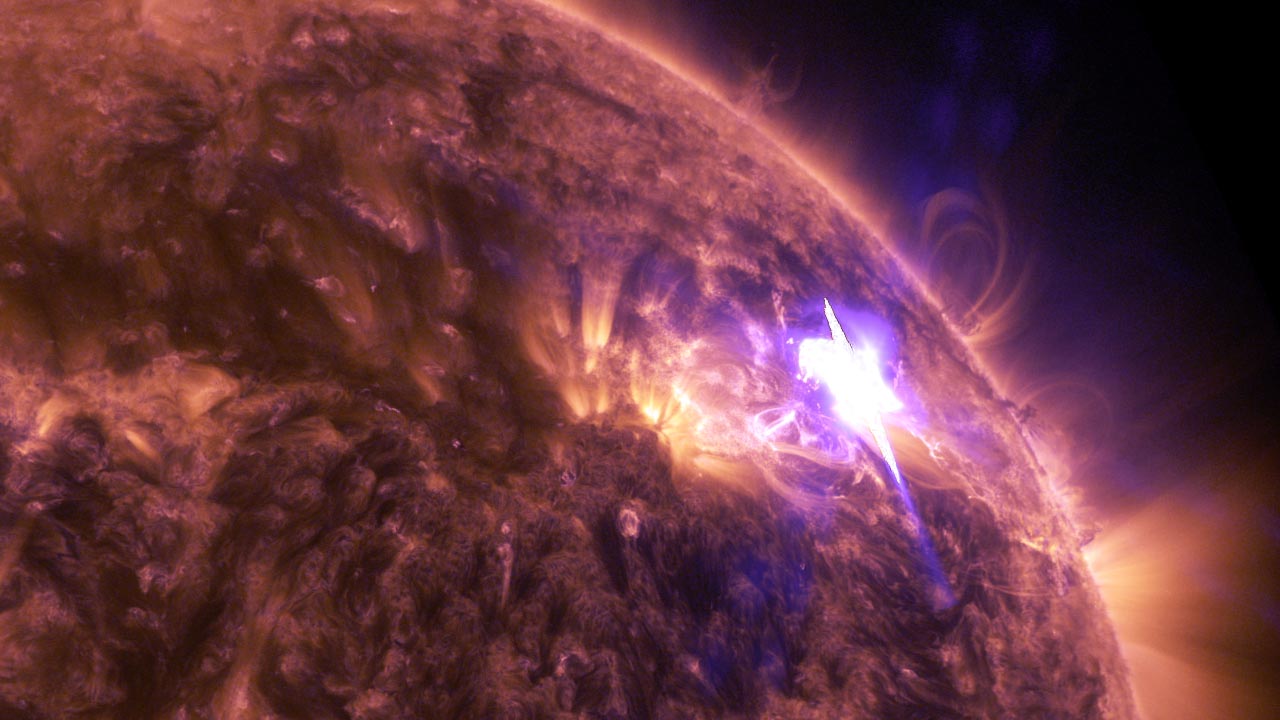An Explosion On The Sun

A NASA spacecraft captures stunning views of a solar flare.
On April 17, 2016, the sun emitted a huge burst of radiation known as a solar flare. The flare appeared as a bright flash of light in images taken by NASA’s Solar Dynamics Observatory, or SDO, spacecraft, which watches the sun constantly. Harmful radiation from a flare cannot pass through Earth's atmosphere to physically affect humans on the ground, however—when intense enough—they can disturb the atmosphere in the layer where GPS and communications signals travel. This particular flare was of moderate strength and only caused brief radio blackouts. It came from a large dark spot on the sun, called a sunspot. These dynamic regions can grow to many times the size of planets and have complex magnetic activity that lead to solar eruptions. Watch the video for a look at the solar flare, as seen by SDO.
A solar flare is the most powerful explosion in the solar system. See one up close in this video.

A bright flash of light bursts from the sun in this image of a solar flare taken by NASA’s SDO spacecraft on April 17, 2016.

SDO observed the flare in different extreme ultraviolet wavelengths, a type of light that is typically invisible to our eyes.

The flare came from a sunspot visible in the upper right of this image. The dark region is large enough that almost five Earths could fit inside.
For More Information
See NASA.gov
Credits
Please give credit for this item to:
NASA's Goddard Space Flight Center
Images courtesy of NASA/GSFC/SDO
-
Writers
- Karen Fox (ADNET Systems, Inc.)
- Sarah Frazier (ADNET Systems, Inc.)
-
Animator
- Tom Bridgman (Global Science and Technology, Inc.)
-
Producer
- Genna Duberstein (USRA)
-
Video editor
- Genna Duberstein (USRA)
Release date
This page was originally published on Thursday, April 28, 2016.
This page was last updated on Wednesday, May 3, 2023 at 1:48 PM EDT.
